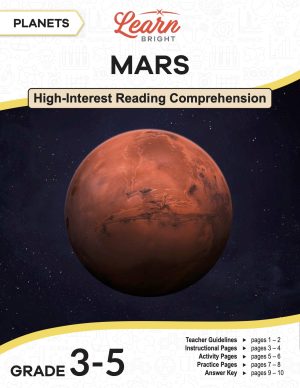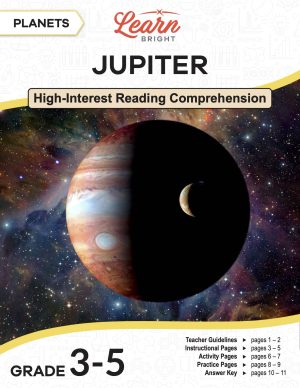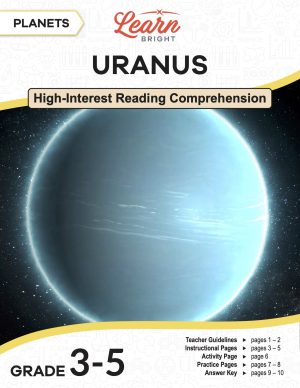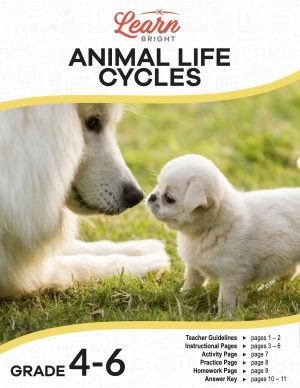Description
What our Correlative Conjunctions lesson plan includes
Lesson Objectives and Overview: Correlative Conjunctions teaches students how to properly use correlative conjunctions in their speaking and writing. At the end of the lesson, students will be able to correctly use correlative conjunctions such as either/or, neither/nor, and more. This lesson is for students in 5th grade.
Classroom Procedure
Every lesson plan provides you with a classroom procedure page that outlines a step-by-step guide to follow. You do not have to follow the guide exactly. The guide helps you organize the lesson and details when to hand out worksheets. It also lists information in the green box that you might find useful. You will find the lesson objectives, state standards, and number of class sessions the lesson should take to complete in this area. In addition, it describes the supplies you will need as well as what and how you need to prepare beforehand.
Options for Lesson
Included with this lesson is an “Options for Lesson” section that lists a number of suggestions for activities to add to the lesson or substitutions for the ones already in the lesson. One adjustment to the lesson activity is to hand it out after the practice page to give students additional practice before the conversation with a partner. For an additional activity, you can have your students identify correlative conjunctions in current reading or other subject text. Finally, you can have your students create five incorrect sentences with correlative conjunctions and then have a second student make corrections.
Teacher Notes
The teacher notes page includes a paragraph with additional guidelines and things to think about as you begin to plan your lesson. This page also includes lines that you can use to add your own notes as you’re preparing for this lesson.
CORRELATIVE CONJUNCTIONS LESSON PLAN CONTENT PAGES
Correlative Conjunctions
The Correlative Conjunctions lesson plan includes two pages of content. Students likely already know how to use conjunctions like for, and, neither, but, or, yet, and so (also known as FANBOYS). Conjunctions are single words that we use to connect words, phrases, or clauses. We also have pairs of conjunctions called correlative conjunctions that we use to join alternatives or equal elements, like two adjectives or two nouns.
The word correlative includes the word relative, which tells us that the alternatives or equal elements that we join have a relation to each other. Because of this relation, we use correlative conjunctions to join words or phrases.
Some common correlative conjunctions are either/or, neither/nor, not only/but also, both/and, from/to, whether/or, such/that, no sooner/than, and scarcely/when.
You need to remember three important things when using correlative conjunctions. The lesson lists each and includes both correct and incorrect examples for students.
First, you need to make sure that both words, clauses, or phrases maintain a parallel structure. If a verb follows the initial conjunction, for example, you must also have a verb follow the second conjunction.
Second, you need to make sure that, when connecting two antecedents, the following pronoun agrees with the second antecedent. The last-mentioned antecedent needs to agree with the pronoun that comes after it.
Finally, you need to make sure that, when connecting two subjects, both of them agree with the verb that follows. The verb has to agree with the subject that comes last.
You will also need to make sure to use commas where necessary when using correlative conjunctions. However, make sure you don’t use too many! Try to follow the basic comma rules.
Make sure to practice using correlative conjunctions in your writing!
CORRELATIVE CONJUNCTIONS LESSON PLAN WORKSHEETS
The Correlative Conjunctions lesson plan includes three worksheets: an activity worksheet, a practice worksheet, and a homework assignment. You can refer to the guide on the classroom procedure page to determine when to hand out each worksheet.
CONVERSATION ACTIVITY WORKSHEET
Students will work with a partner to complete the activity worksheet. Each pair will conduct a conversation where they use correlative conjunctions in every sentence using the given conjunction pairs.
Students may work alone and make up a conversation. You can also conduct the conversation in groups.
FILL IN THE BLANKS PRACTICE WORKSHEET
The practice worksheet asks students to first fill in the blanks in ten sentences with the words or, nor, but, also, or and. They will then complete ten sentences using the correlative conjunctions either/or, neither/nor, not only/but also, or both/and.
CORRELATIVE CONJUNCTIONS HOMEWORK ASSIGNMENT
For the homework assignment, students will complete three short exercises. First, they will circle the correct pronoun or verb in different sentences. Next they will fill in the blanks in sentences with correlative conjunctions. Finally, they will create five sentences with different pairs or correlative conjunctions.
Worksheet Answer Keys
This lesson plan includes answer keys for the practice worksheet and the homework assignment. If you choose to administer the lesson pages to your students via PDF, you will need to save a new file that omits these pages. Otherwise, you can simply print out the applicable pages and keep these as reference for yourself when grading assignments.









